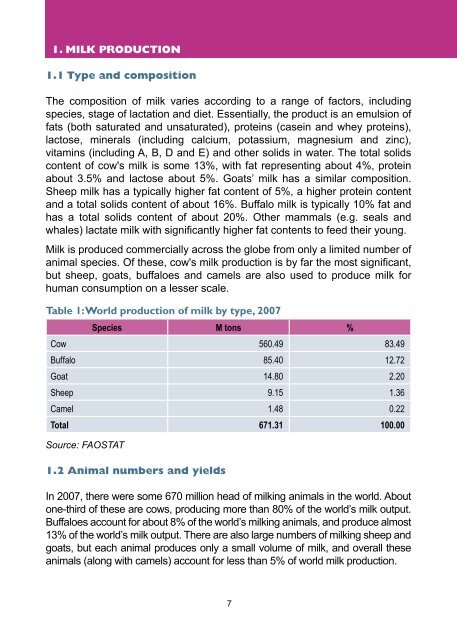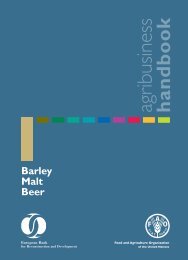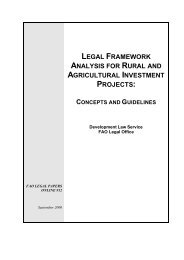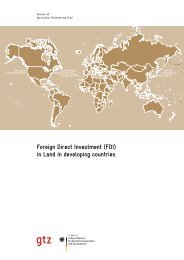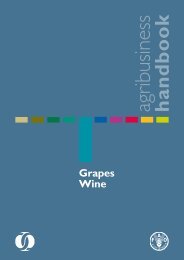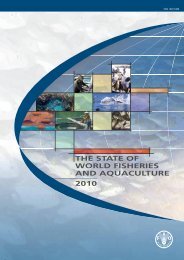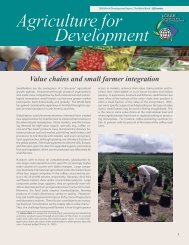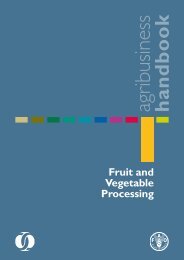Agribusiness Handbook: Milk / Dairy Products - FAO
Agribusiness Handbook: Milk / Dairy Products - FAO
Agribusiness Handbook: Milk / Dairy Products - FAO
You also want an ePaper? Increase the reach of your titles
YUMPU automatically turns print PDFs into web optimized ePapers that Google loves.
1. MILK PRODUCTION<br />
1.1 Type and composition<br />
The composition of milk varies according to a range of factors, including<br />
species, stage of lactation and diet. Essentially, the product is an emulsion of<br />
fats (both saturated and unsaturated), proteins (casein and whey proteins),<br />
lactose, minerals (including calcium, potassium, magnesium and zinc),<br />
vitamins (including A, B, D and E) and other solids in water. The total solids<br />
content of cow's milk is some 13%, with fat representing about 4%, protein<br />
about 3.5% and lactose about 5%. Goats’ milk has a similar composition.<br />
Sheep milk has a typically higher fat content of 5%, a higher protein content<br />
and a total solids content of about 16%. Buffalo milk is typically 10% fat and<br />
has a total solids content of about 20%. Other mammals (e.g. seals and<br />
whales) lactate milk with significantly higher fat contents to feed their young.<br />
<strong>Milk</strong> is produced commercially across the globe from only a limited number of<br />
animal species. Of these, cow's milk production is by far the most significant,<br />
but sheep, goats, buffaloes and camels are also used to produce milk for<br />
human consumption on a lesser scale.<br />
Table 1: World production of milk by type, 2007<br />
Species M tons %<br />
Cow 560.49 83.49<br />
Buffalo 85.40 12.72<br />
Goat 14.80 2.20<br />
Sheep 9.15 1.36<br />
Camel 1.48 0.22<br />
Total 671.31 100.00<br />
Source: <strong>FAO</strong>STAT<br />
1.2 Animal numbers and yields<br />
In 2007, there were some 670 million head of milking animals in the world. About<br />
one-third of these are cows, producing more than 80% of the world’s milk output.<br />
Buffaloes account for about 8% of the world’s milking animals, and produce almost<br />
13% of the world’s milk output. There are also large numbers of milking sheep and<br />
goats, but each animal produces only a small volume of milk, and overall these<br />
animals (along with camels) account for less than 5% of world milk production.<br />
7


